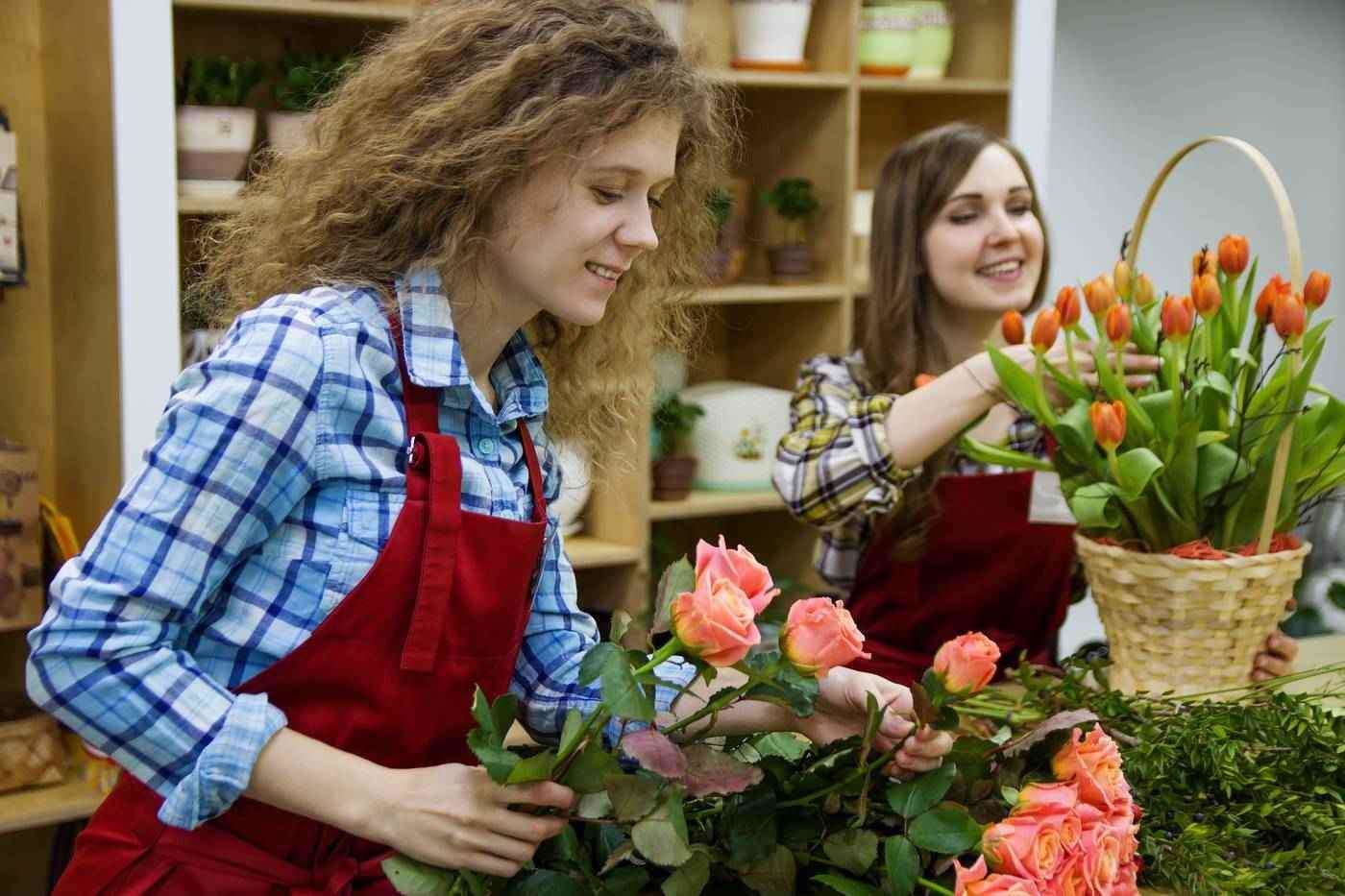In a nutshell, florists make people happier while making the world a more beautiful place. In practical terms, they have a number of responsibilities that go beyond arranging flowers, and even beyond flowers themselves.
What Does a Florist Do?
Florists create and design floral arrangements as bouquets, centerpieces, corsages, wreaths or other arrangements.
They clean, process, cut and arrange flowers (either live or dried) and other greenery and accessories either according to set layouts or as their own original designs. And they do a lot of sweeping up.
Of course, with all those flowers, they have to regularly maintain them as well as pass on that knowledge to customers so that they know how to increase the longevity of their purchases.
Working with flowers is only one part of the job, however. Floristry is a business, and a florist’s day will also be taken up with preparing quotes, taking orders, billing and invoicing, inventory, meeting with clients, sourcing flowers, and other daily business-related tasks.
For many florists, sales do not stop with flowers. They might also sell complementary items such as gift baskets, cards and treats like nice teas or soaps.
Who Do They Sell Flowers To?
Florists sell flowers to individual customers through their own shops or wholesale large quantities to businesses, such as retail floral shops.
As sellers, they have to be experts on the topic of flowers, pointing their customers to the right options for specific occasions and helping them to choose from among the many different varieties of flowers.
It used to be the case that the majority of a florist’s clients would come in off the street to purchase a bouquet or a single arrangement.
Nowadays, with people moving towards buying flowers online, a florist’s customers are often looking for something more specialized, like flowers for events such as weddings, parties, holidays and funerals.
Florists will either sell the flowers and arrange for pickup, handle the delivery to the person who ordered them or take care of the entire flower decorating process.
Where Do They Work?
Many florists are self-employed, working in small florist shops. Others work in flower markets, warehouses or supermarkets.
When hired out to make arrangements for an event they need to travel to a variety of places, from churches to convention centres to dance halls. So compared to many jobs, there’s lots of variety and a lot of opportunity to move around.
When Do They Work?
Florists do not get to sleep in. Most florists will be at the shop early to make sure their morning deliveries are ready to go out before store hours open. If a trip to the flower market is called for, a florist might already be at the market well before dawn.
Depending on the number of orders and the amount of clean-up work to be done at the end of the day, a florist can work into the evening hours, even on a regular day.
Holidays like Valentine’s Day and Mother’s Day are the busiest times for florists. In the lead up to those days, you could easily expect to put in 12 to 14-hour shifts.
Other occasions such as birthdays or anniversaries, or events such as weddings or funerals, keep florists busy the rest of the year.
In the cooler climates of Europe and North America more weddings happen in the warmer months, so summer can also be quite busy, depending on a florist’s specialty and clientele.
For all the hard work, though, florists tend to love their jobs. The perks of working among beautiful flowers all day makes the hustle, the bustle and the sore, tired feet well worth it.
PART 2: FLORIST GUIDE
Image credit: Pixabay

Quite helpful.
Needed to know some essential parts of being a florist and how do they work.
Thanks again.
Keep up the good work.